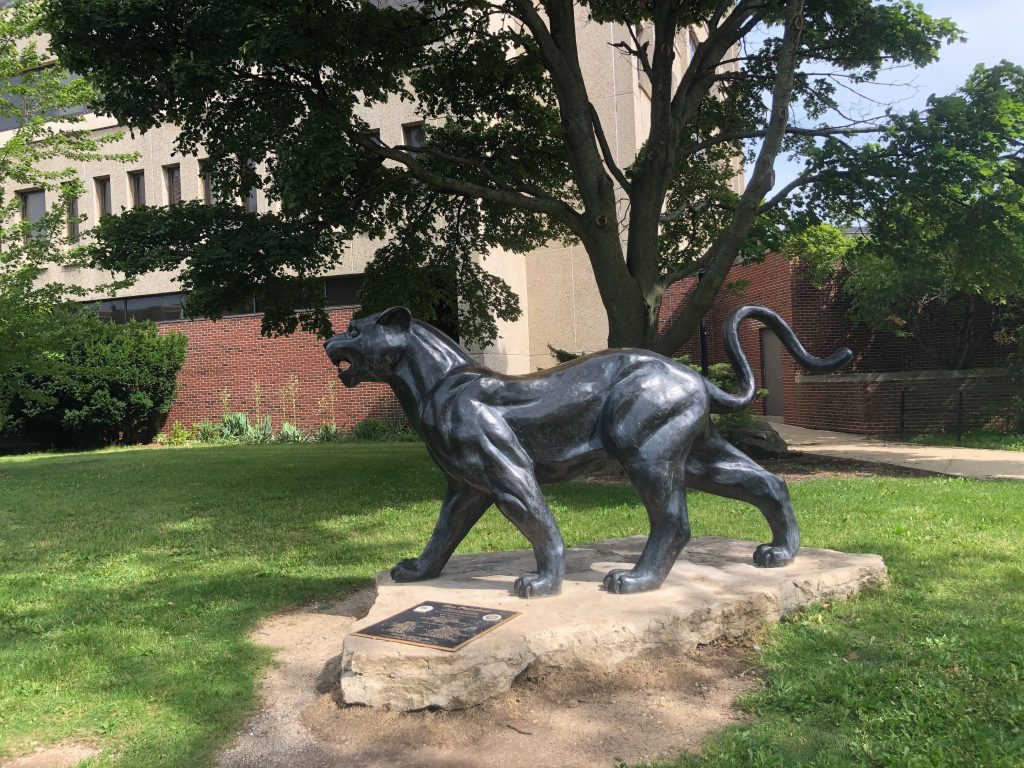How to Grow Milwaukee to 1 Million
Mayor Cavalier Johnson is missing the key way to grow the city.
It was back in 2022 that Mayor Cavalier Johnson declared a bold goal for Milwaukee, to nearly double the city’s population of 577,222, growing it to 1 million people. He reaffirmed that powerful vision in his annual State of the City speech delivered last week.
And how will he accomplish this? By changing the zoning code to allow for more density, adding economic opportunities and increasing public transit options, Johnson has suggested. A 2023 story by Mike Gousha and John D. Johnson echoed this while offering other ways to grow the city’s population. But they’ve all missed the key way to power a city’s potential:
Grow the university. Build the research funding and capacity of UW-Milwaukee and watch the city’s economy and population grow.
The evidence for this is overwhelming. “Decades of research have demonstrated a clear link between universities, regional innovation, and economic development,’ a story by the Urban Lab notes.
Research by economists Edward Glaeser and Albert Saiz has found that the percentage of workers with college degrees is a “powerful predictor of urban growth.” As the “number of college graduates per capita doubles, the expected growth rate over the decade rises by roughly 4 percent.”
“College towns are emerging as economic powerhouses, thanks to their outsized share of the young, highly educated workers who are in such high demand,” a story by Axios reported. “And as more students stay put after graduation, college towns’ potential is only growing.
As urbanist Richard Florida has written, “Silicon Valley is unimaginable without Stanford University. The innovation ecosystem of Boston and Cambridge turns on MIT. And research universities have played a key role in reviving cities and neighborhoods hollowed out by crime and deindustrialization. Pittsburgh’s revival, for instance, has been spurred by technologies pioneered at Carnegie Mellon, such as robotics and autonomous vehicles.”
“Universities play key roles in innovation (based on patents) and local entrepreneurship (based on startups),” he noted. “Metropolitan areas with a research university have 62 percent more patenting (that is, patents registered within the metropolitan area) than those that do not… Metros that are home to at least one research university have nearly 50 percent more venture-capital investment in startups than those that have none.”
One need only look 75 miles away to UW-Madison to see how a leading university can grow a city’s economy and population. Over the last three decades Dane County has seen its population grow from 385,362 to 568,203, with much of that growth coming since 2010, at a time when most of the state including Milwaukee, had flat or declining rates of growth.
As to its economy, a recent study ranked Madison as number one in tech development in the entire Midwest. “The state capital had the highest ratio of tech employment opportunities with 71 of every 1,000 occupations being in the tech space,” the Business Journal reported. “Madison also had the second-highest median salary for tech professionals at about $89,000. It also ranked third for tech establishment density with a score of 31.1 tech establishments out of 1,000.”
Ranking number two was Ann Arbor, Michigan and number four was Minneapolis-St. Paul, both urban areas with top universities.
A study by Credit Review ranked Madison as the 15th best city, among top 100 metro areas in the nation, to start a small business in arts, entertainment and recreation. Ranking first was college town Austin (University of Texas), ranking second was Provo-Orem, Utah, which is nearby Brigham Young University and third was Raleigh-Cary, part of the famed research triangle in North Carolina.
And the York IE Fastest-Growing Startup Cities report ranked Madison as the third fastest growing start-up city in the country, ahead of places like Denver, Colorado, and Cleveland, Ohio with a start-up growth rate of 793%.
UW-Madison is a research powerhouse, ranking eighth in the nation among American universities in research and development expenditures, with more than $1.5 billion in 2022. UW-Milwaukee ranks 201st on that list with just over $56 million.
Milwaukee’s one-time teachers college did not became a university until 1958, more than a century after UW-Madison and has made some progress on the research front in the last 25 years, but it has not been steadily upward.
A key impediment to that effort is underfunding by the state and the Universities of Wisconsin system, as business executive and former journalist John Torinus has repeatedly argued. Statistics in one recent study showed that state funding per pupil was $12,475 for UW-Madison in 2010 versus $5,410 for UWM. By 2019 the gap had decreased with $9,108 for UW-Madison and $5,351, but that was all about cuts for Madison and no gain for Milwaukee. As a 2021 report by the Wisconsin Policy Forum found, UWM ranks second to last in state funding among a group of 14 peer institutions across the United States.
That is the challenge for Milwaukee and its mayor. Better funding could grow a stronger university that does more research that spins off more economic growth and jobs for Milwaukee. It also means more graduates for local businesses like Northwestern Mutual (2,195 of its workers are UWM graduates) Rockwell Automation (721 UWM grads) and U.S. Bank (539 UWM grads).
Business groups like the Metropolitan Milwaukee Association of Commerce and the M7 group have at times noted the importance of UWM, but they will need to do far more than that to win more funding for what has become the second most important university in Wisconsin. It will need to be a concerted lobbying effort, much like the push for a city sales tax but sustained over many years.
The state’s newly remapped legislative districts may be a help in this effort, giving Milwaukee representatives a bit more clout in Madison. That said, overturning a 60-year history of overlooking and underfunding UWM will not be an easy thing to accomplish. But if you’re trying to dream big, and looking to nearly double the city’s population, the surest way to get there — hard as that may be to achieve — is with a vibrant urban research university.
If you think stories like this are important, become a member of Urban Milwaukee and help support real, independent journalism. Plus you get some cool added benefits.
More about the Growing MKE proposal
- Mayor Signs Housing Legislation, Praises Late Jonathan Brostoff - Jeramey Jannene - Jul 16th, 2025
- Council Adopts Growing MKE Plan - Jeramey Jannene - Jul 15th, 2025
- After Lengthy Debate, Council Legalizes Carriage Homes - Jeramey Jannene - Jul 15th, 2025
- Housing Plan Wins Key Council Committee Endorsement - Jeramey Jannene - Jul 9th, 2025
- City Hall: Committee Waters Down Proposed ‘Granny Flat’ Plan - Jeramey Jannene - Jun 17th, 2025
- Madison Pursuing Its Own Zoning Reform Similar To ‘Growing MKE’ - Sarah Lehr - Jun 12th, 2025
- ‘Growing MKE’ Proposal Picks Up Key Endorsement - Jeramey Jannene - Jun 2nd, 2025
- City Revises Its ‘Growing MKE’ Plan, Including Changing The Name - Jeramey Jannene - May 1st, 2025
- Milwaukee Delays Legalizing Carriage Houses - Jeramey Jannene - Apr 22nd, 2025
- Committee Overturns Plan Commission, Recommends ‘Missing Middle’ Housing - Jeramey Jannene - Apr 17th, 2025
Read more about Growing MKE proposal here
Murphy's Law
-
Can Rep. Clancy Win Reelection?
 Jul 24th, 2024 by Bruce Murphy
Jul 24th, 2024 by Bruce Murphy
-
National Media Discovers Mayor Johnson
 Jul 16th, 2024 by Bruce Murphy
Jul 16th, 2024 by Bruce Murphy
-
Milwaukee Arts Groups in Big Trouble
 Jul 10th, 2024 by Bruce Murphy
Jul 10th, 2024 by Bruce Murphy























The city number one should probably concentrate on getting murders under 100 for a year. Number 2, take the failing MPS school system then dismantle it and start over. Many families with children leave the city because the schools are so poor.
Ryan Cotic sees the right target. He just has the wrong solution. When will Urban Milwaukee acknowledge that kids, who are traumatized, are the issue and THEY need healing NOT incarceration. Bruce Data Wonk have ignored this simple fact and yet they have never written about WHY trauma is not the cause of the murders and the failure of MPS. MPS still suspends how many kids a year and ALL (almost all) of those kids have been traumatized. Where is the Leadership Where is the response. At least have the courage to try and prove that trauma is not the base for all violent behavior!!
Ignoring KIDS who are TRAUMATIZED is not the solution
UWM is the targeted institution in Murphy’s Law, but what about Marquette and MSOE? They have exhibited prominant growth of late, and what is their role in science, engineering, and research in the community?
And they all face the same problem. While we are behind Chicago, Chicago faces the same issue, the refusal to HEAL traumatized kids. 9 deaths yesterday That has an impact on even a city the size of Chicago Bruce Data Wonk Anyone ???
Thomas, I agree with you that kids are traumatized by lots of things, especially those in the city (vs. the burbs). However there needs to be a partnership between kids, their parents (often absent in body, mind, and spirit), and the schools. When I was a student at MPS, there were LOTS of extracurricular activities to keep me busy and involved with others in positive engergized activities. No bussing to take kids away from their schools in mid afternoon. I also was involved in several religious/secular organizations that catered to kids in my age group. It was tough to get into mischef because there was so much to do, and there was strong cultural and ethnic pressure to do so, to complement that of my single parent family (without siblings).
YES It sounds like you were not traumatized for starters. Then is sounds like you had a solid family life. Depending on what MPS schools you attended will determine the number of kid you know who were suspended. I suspect, not that many were suspended from the schools that you attended. All (most) of the kids suspended have been traumatized and instead of MPS providing therapy that addresses the kids trauma, MPS traumatizes the kid more by suspending them.
Good Article,. Agree with comment / idea to include the other higher learning institutions; MSOE, Marquette, MIAD & MATC ++ with added funding, or tax incentivization…Invest our resources to grow our positives.